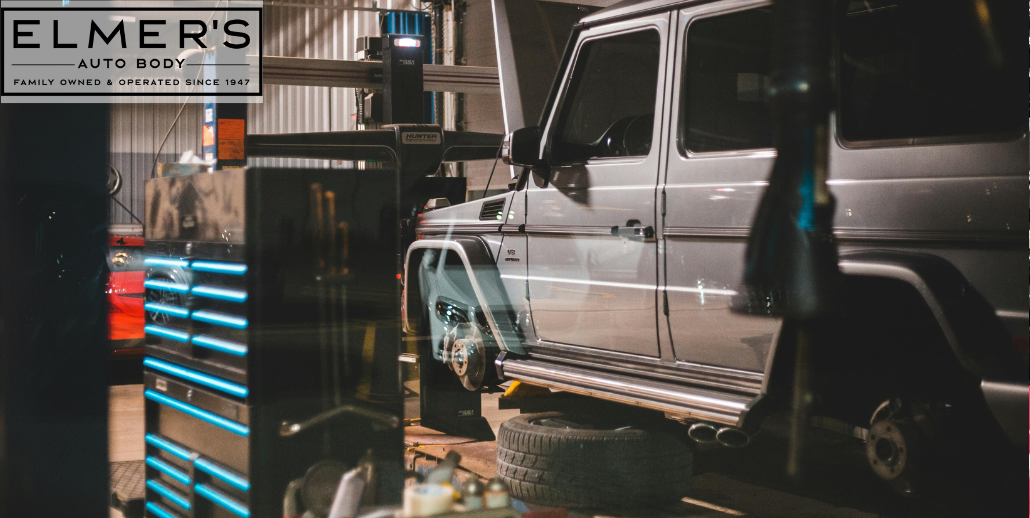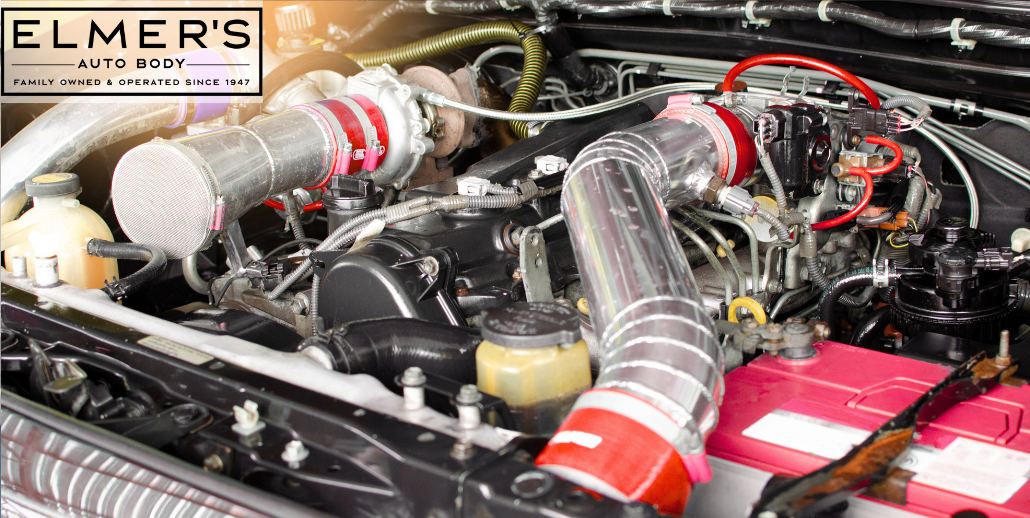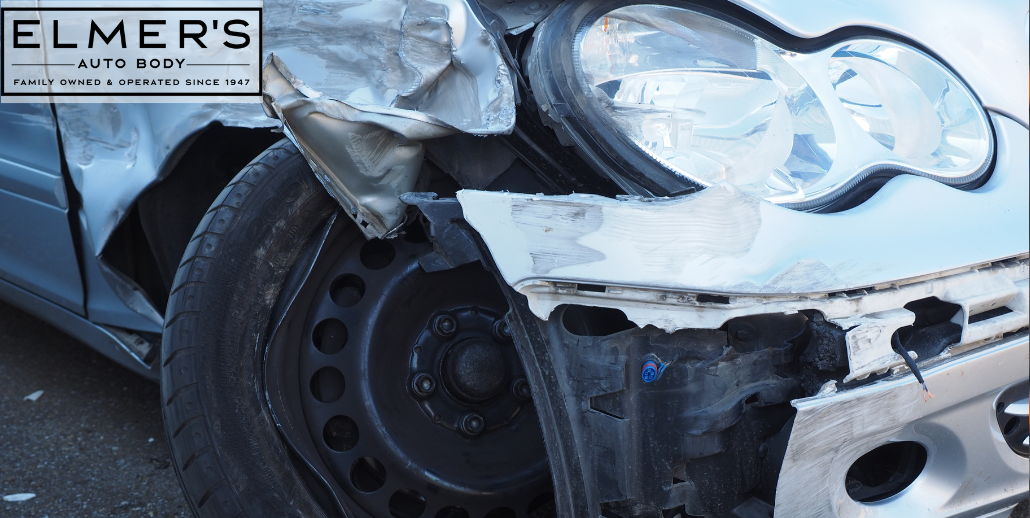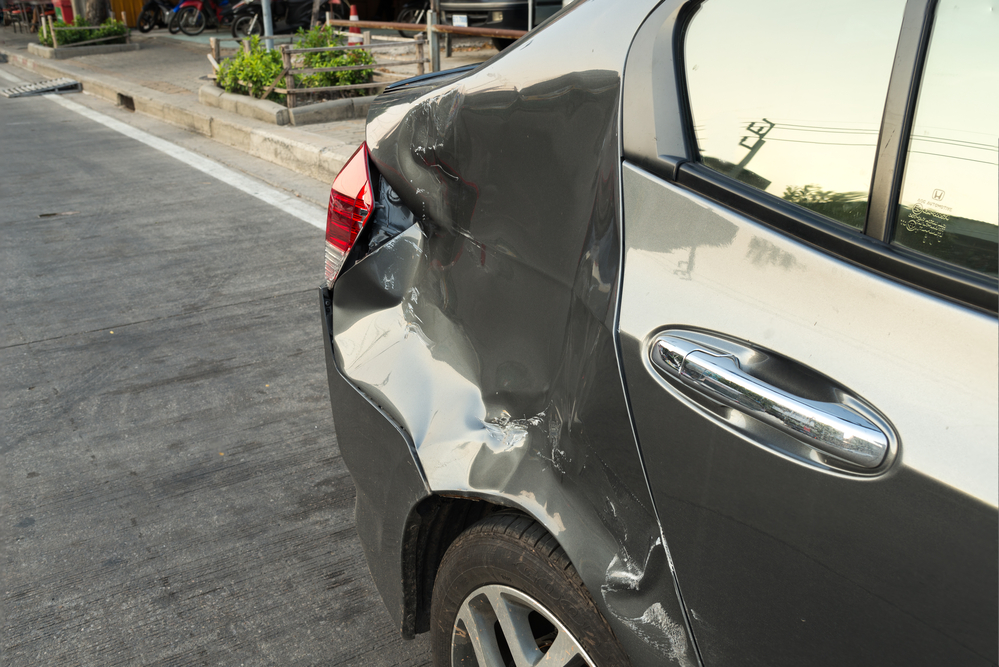When you get into an accident, you expect your insurance company to cover some if not all of the cost. You also expect to get the best quality parts for your car. Insurers, however, often authorize what’s known as “Like Kind and Quality” (LKQ) parts instead of Original Equipment Manufacturer (OEM) ones. While this may seem fair on the surface, LKQ parts aren’t the same as OEM components, and that can be consequences for your vehicle’s performance and safety.
At Elmer’s Auto Body, we’ve seen the difference and know that OEM parts are best. That’s why that’s all that we use.
Key Takeaways
- “Like Kind and Quality” parts are often used or aftermarket — not the same as OEM.
- LKQ parts can cause alignment, durability, and ADAS performance issues.
- OEM parts ensure safety and proper fit for your make and model.
- You can request or negotiate for OEM replacements with your insurer.
- Elmer’s Auto Body prioritizes your safety with OEM-approved repairs.
What “Like Kind and Quality” Actually Means
“Like Kind and Quality” may sound like they are on the same level as OEM components, but they aren’t. LKQ is an insurance term that stands for “used, recycled, or aftermarket parts that are comparable to OEM components.” That doesn’t mean they are the same or even approved by vehicle manufacturers. In many cases, LKQ parts come from salvaged vehicles or an unaffiliated third-party manufacturer.
Now here’s the issue with LKQ parts: there’s no guarantee that these pieces fit or function as they should. LKQ parts may not meet the same standards as OEM components or be made with the same materials.
Why LKQ Parts Can Be Risky
Like Kind and Quality parts can perform acceptably, but there is no telling which ones will do the job from those that will negatively impact your vehicle’s performance. Here are four reasons why LKQ parts can be risky:
- Fit and alignment issues: Even small dimensional differences can affect how panels, bumpers, or safety sensors align.
- Material variations: Non-OEM metal or plastic can be thinner, weaker, or more prone to corrosion.
- No warranty from the automaker: Most vehicle manufacturers will not honor warranties if non-OEM parts are installed.
- Possible ADAS interference: Many LKQ parts are not tested or certified for vehicles with Advanced Driver Assistance Systems (ADAS), which can lead to calibration failures.
Why OEM Parts Are the Safer Choice
So why are OEM parts better than LKQ parts? Why should you ask for OEM over LKQ? Not are parts are created equal in the automobile world. OEM parts are made by the manufacturer of your vehicle. They are also designed, tested, and certified by said manufacturer, making OEM parts the standard. Therefore, if you want your vehicle returned to its pre-accident condition, OEM parts are the best choice, as they meet all safety standards and restore structural integrity.
OEM components are priceless when it comes to critical systems, like airbag sensors, bumpers, structural frames, and ADAS pieces. When you get these as OEM parts, you know you’re getting components made with your vehicle’s exact make and model in mind. No guesswork. No mistakes.
What To Do When Your Insurer Insists on Like Kind and Quality Parts
In New Jersey, you have the right to request OEM parts for your auto repair. Your insurer, however, may insist on LKQ parts. They tend to do this to bring the cost of the repairs down for themselves.
Keep the following in mind:
- Ask for transparency. Request a detailed list of parts being used, including whether they’re OEM, aftermarket, or recycled.
- Review your insurance policy. Some policies allow for OEM parts, especially if you purchased an OEM parts endorsement.
- Request a supplement. If an LKQ part doesn’t fit properly, your repair shop can request insurer approval to replace it with an OEM part.
- Document everything. Keep photos, estimates, and all correspondence with your insurer and repair shop.
- Choose your repair facility. You are not required to use an insurer’s Direct Repair Program (DRP) shop. Elmer’s Auto Body works for you, not the insurance company, and we also only use OEM parts.
Pro Tip
Even if your insurer pushes for LKQ parts, you can often negotiate OEM replacements for critical safety components. Always ask your repair facility to identify any non-OEM parts before installation. Once they’re installed, it’s much harder to prove they’re causing problems.
FAQs
Are LKQ parts the same as OEM?
No. LKQ parts are used or aftermarket components meant to mimic OEM ones but may not meet the same standards.
Can I refuse LKQ parts?
Yes, though it depends on your policy. You can request OEM parts or add an OEM endorsement for future coverage.
Will OEM parts cost more?
Usually, yes — but they restore your vehicle to factory condition, protecting your safety and long-term value.
Avoid LKQ Parts By Choosing Elmer’s Auto Body
While Like Kind and Quality parts may function properly, you don’t want to take a risk when it comes to your vehicle’s performance and safety. Make sure you’re getting OEM parts for all auto body repairs. The first step is asking your insurance company. Next, choose a South Jersey collision repair shop like Elmer’s Auto Body. We’ve been in business since 1947 and have always used OEM. We’re here for you, not the insurance companies.
Protect Your Vehicle with the Right Parts
Don’t settle for less than OEM-quality repairs. Elmer’s Auto Body ensures your vehicle is restored to factory standards — safely, precisely, and without compromise.






